 |
| http://www.amazon.com/Geezer-with-A-Grudge/dp/B007RPQJ24 |
I have been married to an artist for almost 40 years and my wife and I disagree about the point where art ends and where worthless crap begins just as strongly as we did in 1968. My wife is an excellent painter, designer, sculptor, and teacher. She has created art works from jewelry to gallery pieces to full-size robotic dinosaurs to theme park rides, all very artistic and all easily respected by me and far more sophisticated folks. Still, after years of being drug to galleries, museums, sculpture gardens, and artist’s homes, my appreciation of most art is limited. In fact, I suspect that the Latin root for the word “art” can be translated to the phrase “sloppy workmanship” or, simply, "not good."
A 1950’s science fiction author, Theodore Sturgeon, once wrote, “90% of everything is crap.” I’ve always thought that Ted was a bleeding-heart optimist. The art world, for example, produces a crap quotient considerably higher than 90%. Music, visual art, plays and movies, the written word, dance, and the rest of the formal artistic world cranks out a ton of crap for every ounce of quality produced. In my opinion, more art than most any other human activity falls into the “not good” category.
If I’m given a choice between wandering through a fine art gallery or a crafts show, I’ll take the crafts show every time. At the gallery, I’ll search out the tiny sections of mosaics, architect’s building models, furniture, and weapons. I’ll be dutifully impressed by a few examples of representational art and a little of the stone and metal sculpture. What I won’t waste time on are the multitudes of scribbling that look like something a bored three-year-old child doodled. I don’t bother with sculpture that could have been dredged from a local landfill, after a year or two of festering in the mud. If there is any sign of splattered paint, tire treads, randomly pasted newspaper, or cans of commercial products piled into the shape of a pyramid, I’m outta there. I don’t pause to marvel at work where the materials, execution, and appearance scream, “I don’t know what I’m doing, but I’m doing a lot of it!” I can scream for myself, I don’t need some academic dork’s help in “expressing my inner child.” I have a strong-willed inner-uber-brat who has no trouble finding his way to the surface where he can splash paint, bust stuff, and glue, solder, or weld unrelated items to unrecognizable junk.
What I don’t have is the unusual discipline to create much of the precise, scientifically rational, ascetically pleasing, utilitarian stuff that I see at a really good craft fair. Turned ceramic and wooden bowls with impossibly tiny openings, inlaid cabinets with seams so complicated and perfectly fitted that it looks like maple and walnut simply grew together, and comfortable furniture that looks cool are among the things that attract my attention. My wife calls the folks who build this stuff “artisans.” I think there is an insult implied in the name, but I just want to know “how’d they do that?” Any idiot can, apparently, create art, but this stuff is impossibly good.
Until fairly recently, motorcycles have been mostly immune to the seductive low-tech path of becoming art instead of reliable, functional technology. The movie, Easy Rider changed all that. Where before only a few goofy lunatics decorated their motorcycles with shiny baubles, tattoo parlor paint jobs, and Hollywood leather, that brainless movie convinced millions of people that motorcycles can be uselessly “artistic” and still be worth money. Since then, a fair segment of motorcycling has steadily gone downhill.
Art perforates the durability, performance, and practicality of motorcycling, at least in this country, to the point that thousands of motorcycles can be rightfully called . . . “garage candy.” Oh man, the shame of it! Some people stoop so low as to describe their own rides in the same terms that Nigel used to babble about his collectors’ guitars in Spinal Tap. (In case you didn’t get it, Spinal Tap is a comedy.) Back in the day, “garage candy” meant a bag of peanut M&Ms stashed in the garage where my wife would never look. Today, it's a market-segment.
Since we have given up on being able to manufacture precision technical products in this country, we’ve developed a good-sized industry specializing in primitive sheet metal, overweight and unstable replicas of 1940s motorcycle frames, and assorted artistic gadgets that a new owner can screw, glue, or dangle from his motorcycle. We even have prime-time, reality television shows that subject audiences to an evening with low-tech acetylene welders and their hysterical relatives creating this junk out of materials available to any blacksmith with a good hammer and a hillside laced with taconite. Sometimes I flip back and forth between the motorcycle builder show and PBS’s “Frontier House, Frontier Life” trying to determine which group is using the most archaic technology. Usually, it’s the motorcycle builders.
So motorcycles are sliding into the realm of art and I’m going to miss function following form, which is being replaced by unrecognizable function and downright silly forms. The upside is that these works of art don’t work well enough to be ridden more than a few dozen miles a year. Even if the bike could manage to burble down the road for a ways, no human could stand the discomfort of an artistic riding position for long.
Outside of a few Shriner parades, the only place I’m likely to suffer exposure to artistic motorcycles is when I’m passing by an open garage where one of the damn things is being polished. Does that mean the once-practical garage is devolving into an art gallery?
MMM October-November 2005
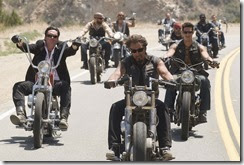
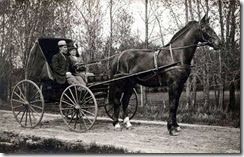
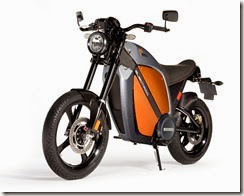
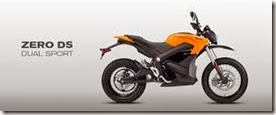





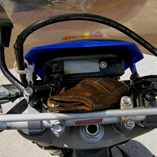


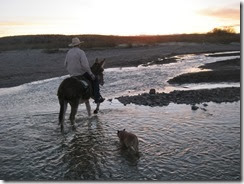
.bmp)